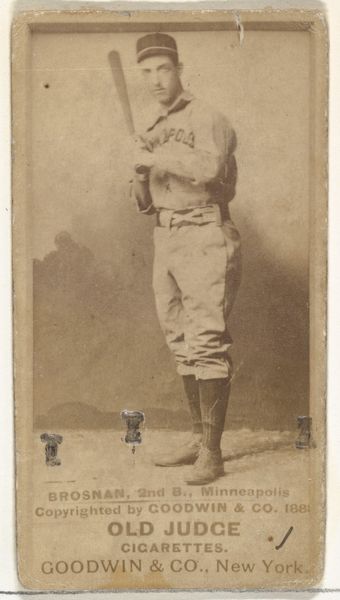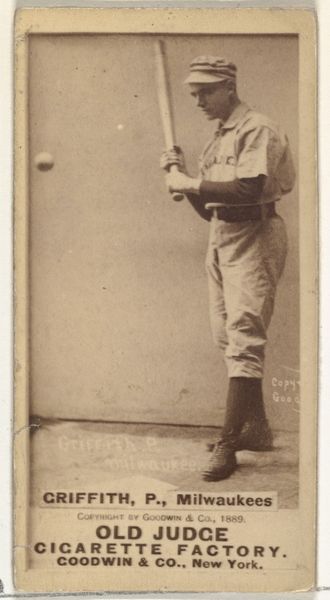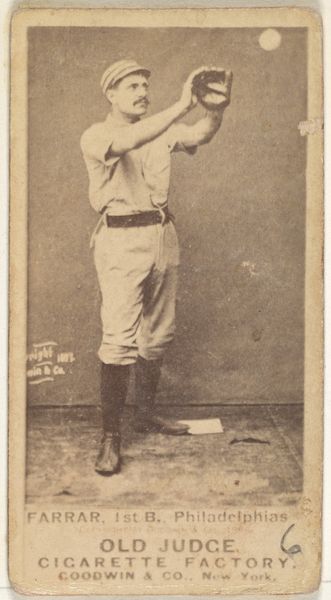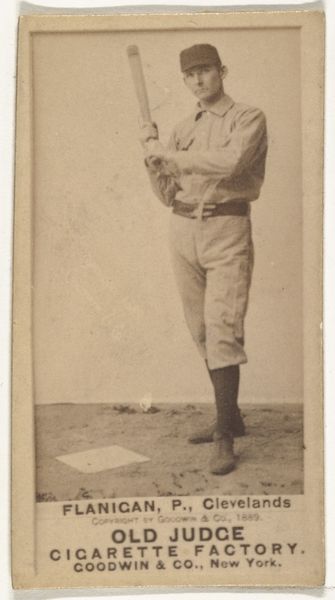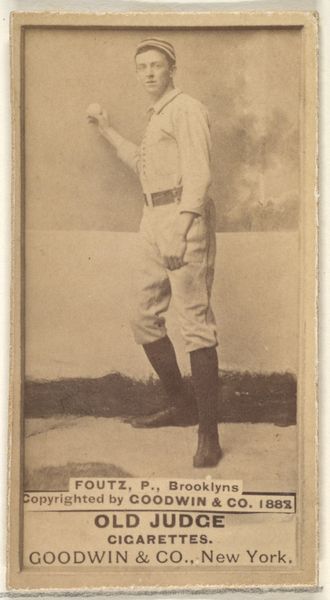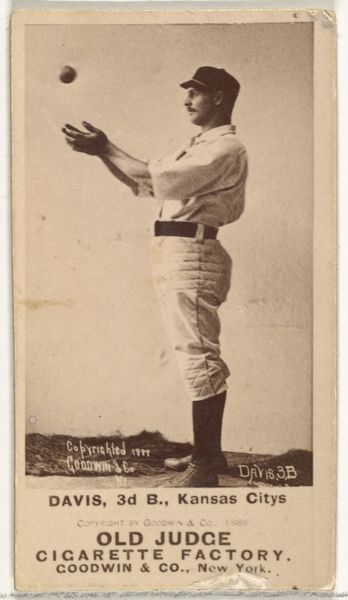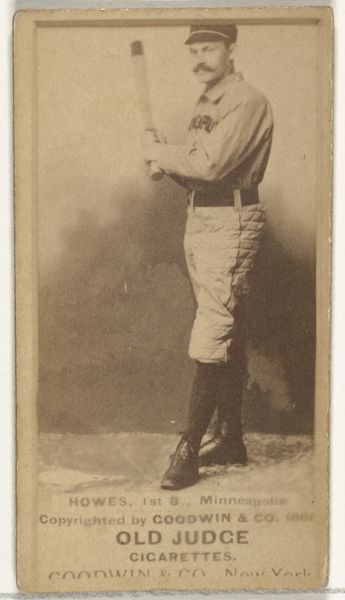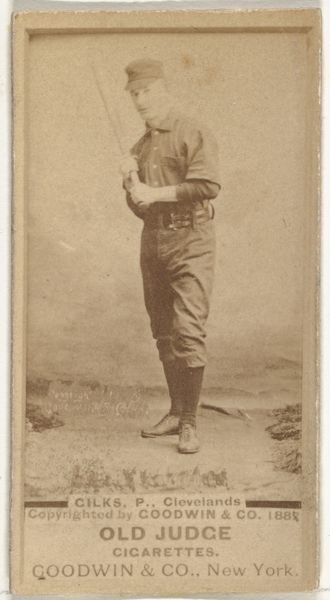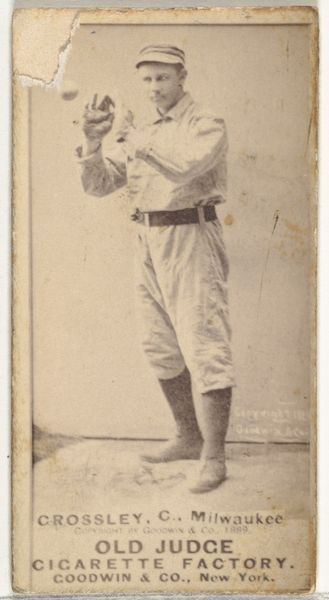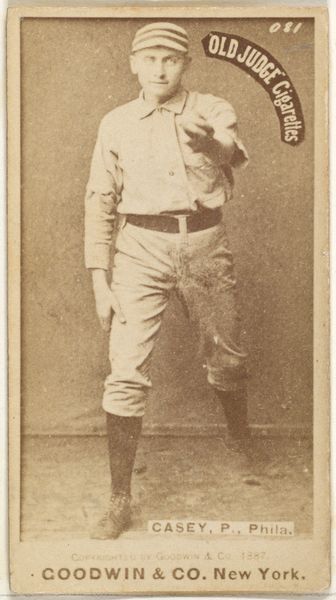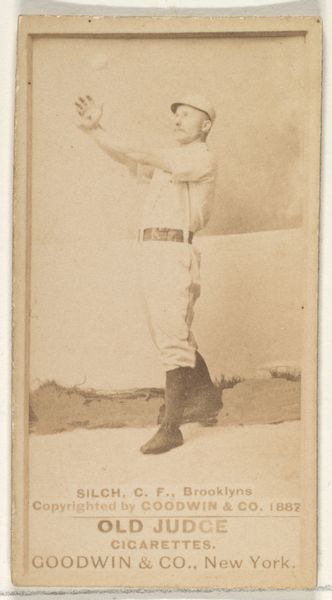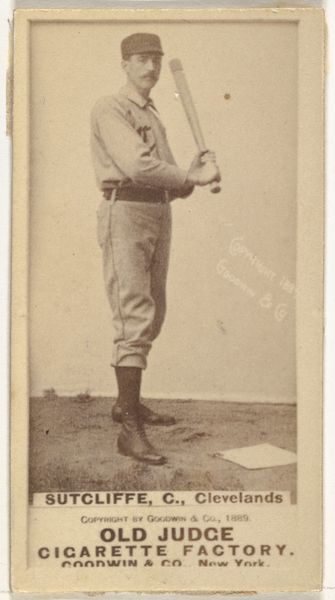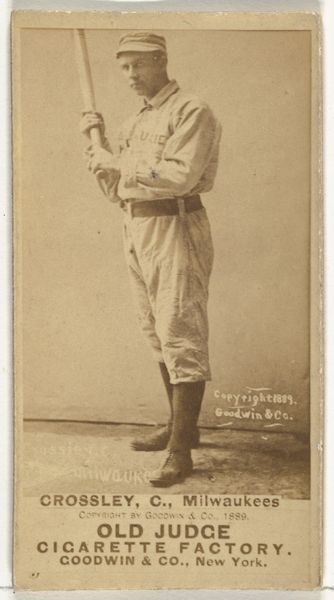
Henry Gruber, Pitcher, Cleveland, from the Old Judge series (N172) for Old Judge Cigarettes 1889
0:00
0:00
drawing, print
#
portrait
#
pencil drawn
#
photo of handprinted image
#
drawing
#
light pencil work
#
photo restoration
# print
#
pencil sketch
#
old engraving style
#
baseball
#
charcoal drawing
#
pencil drawing
#
19th century
#
men
#
athlete
#
watercolor
Dimensions: sheet: 2 11/16 x 1 3/8 in. (6.9 x 3.5 cm)
Copyright: Public Domain
Editor: Here we have "Henry Gruber, Pitcher, Cleveland, from the Old Judge series (N172) for Old Judge Cigarettes," made in 1889. It appears to be a print and drawing combination, part of a series for a cigarette brand. It’s amazing to see this relic of early baseball promotion. What strikes you about the composition of this piece? Curator: The formal elements command attention. Note the stark contrast between the subject and background, achieved through a delicate balance of light and shadow. The texture suggests a transfer drawing technique, quite prevalent at the time, giving a unique dimensionality. How does this restricted tonal range guide your perception? Editor: It makes me focus on the texture, like the folds of his uniform, but also flattens the image. It feels very… two-dimensional despite being a portrait. I almost miss that there's depth in the ground beneath his feet. It leads me to consider the work almost as an iconographic, even geometric configuration more than as a 'real' person. Curator: Precisely. Consider then the figure’s stance—his positioning creates a dynamic diagonal line that bisects the rectangular format, thereby establishing an implied kinetic energy. The economy of line serves to distill the form to its very essence, evoking, not replicating. The function of portraiture in its earliest iterations was as a semiotic signifier of status, might the limited tonal variation work to accomplish a similar effect? Editor: That's fascinating! Thinking about the geometric forms creates this sense of iconic, even historical value. Instead of thinking of this piece simply as advertising material, it helps me notice the formal elements, elevating its historical subject beyond its immediate context. Curator: Agreed. Close inspection of such ephemera allows a reconsideration of intention; here, the interplay of surface and depth invites reevaluation.
Comments
No comments
Be the first to comment and join the conversation on the ultimate creative platform.

